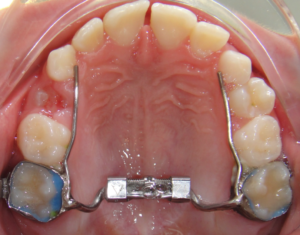Common Invisalign Questions
April 9th, 2024
With Invisalign becoming more and more popular, you may be wondering what to expect if you were to get Invisalign treatment. There are many common questions we get asked on a day to day basis at Kennell Orthodontics. Thankfully, Dr. Kennell and his team are here to put your mind at ease!

First of all, lets start with, How does Invisalign treatment work?
Using 3-D computer imaging technology, Invisalign creates a series of custom-made, clear aligners exclusively for your teeth, based on the treatment plan that we specify for you. Each aligner moves teeth incrementally and is worn for two weeks, then, is switched out for the next aligner in the series until the final position is achieved.
Will I experience pain during treatment?
Most people experience temporary discomfort for a few days after a new aligner is placed. This feeling of pressure is normal and is a sign that Invisalign is working by sequentially moving your teeth to their final destination.
Can other people see that I'm in treatment?
One of the benefits of Invisalign is that the aligners are clear. Most of our patients need to have little bumps placed on their teeth called attachments to help guide the teeth into the aligner, but luckily these attachments are tooth colored and are also not very noticeable.

Are there any foods I shouldn’t eat while in treatment?
You can eat normally during the entire course of treatment. One of the advantages of Invisalign is that the aligners are removable. We do ask for you to be aware that attachments could fall off if you were to eat something too hard, but other than that there are not restrictions to your eating. Simply take the aligners out before each meal, brush your teeth before reinserting the aligner. If you are unable to brush your teeth due to being at work or school, a good rinse with water will do the trick too!
What about chewing gum?
We recommend removing your aligners for all meals and snacks, as gum and other chewy substances can stick to the aligners.
How often must I wear my aligners?
The most important part of the Invisalign treatment is that you wear your aligners for any progress to be made. With saying that, aligners should be worn all day, except when eating, brushing, and flossing.
Will my speech be affected by the aligners?
As with any orthodontic treatment, aligners may temporarily affect your speech. If this does happen, your tongue will adjust within a day or two and your speech should return to normal.
Can I smoke during treatment?
We discourage smoking while wearing the aligners as they may become discolored.
How do I clean my aligners?
The best way to clean your aligners is by brushing and rinsing them in lukewarm water. Invisalign also provides you with "cleaning crystals" to put in a cup of water with your aligners. You can use these every so often and leave them in overnight to give them an extra good cleaning.
How often must I visit the office during treatment?
For most patients, we will provide you with 4-5 aligners at a time. This makes visits every 8-10 weeks which is frequent enough for us to determine that your treatment is progressing properly. We will provide you with a specific schedule that supports your individual treatment plan.
Dr. Alan Kennell has OVER 20 YEARS experience and extensive training with Invisalign. General dentists receive minimal orthodontic training in dental school and usually attend a weekend hotel course to learn how to do Invisalign. If your dentist (or your child's dentist) offers orthodontic treatment, insist on seeing an orthodontic specialist! If you have any questions please give our Laconia, Plymouth or Littleton offices a call.











